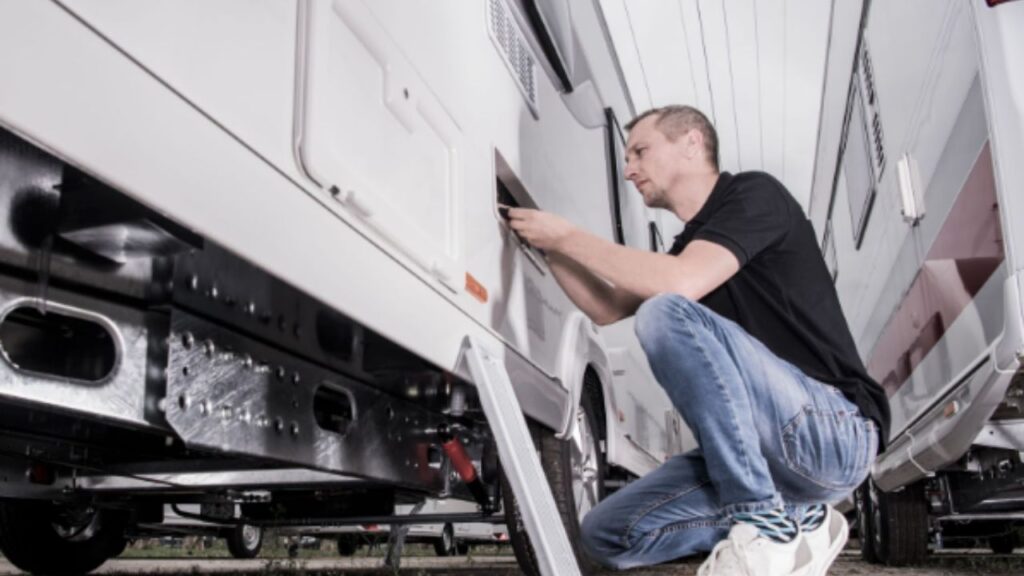Travelling by motorhome is a unique experience that allows you to enjoy the freedom and comfort of having your home with you. However, to ensure the safety of your trip and avoid mishaps, it is essential to keep your motorhome's MOT up to date. Everything you need to know about the MOT for motorhomes will be explained in this article, from the new regulations to the prices and issues that are checked.
New MOT regulations for motorhomes
Over the last few years, the MOT regulations for motorhomes have been changing, so it is essential to be informed about these updates in order to comply with the regulations and avoid penalties. Current legislation stipulates that motorhomes must pass the MOT as regularly as conventional vehicles.
Among the main new features are the following:
- Exhaustive inspection of the gas system: the condition and operation of the gas installation is checked, including gas cylinders and safety devices. This is crucial, as a gas system in poor condition can be dangerous.
- Checking the condition of fixed elements: such as furniture and accessories anchored to the motorhome. These items must be securely fastened to avoid accidents while driving.
- Inspection of the habitability: this ensures that the living space complies with the minimum conditions of safety and comfort. It includes checking windows, ventilation and electrical systems.
It is important to note that these changes in the regulations are intended to ensure that motorhomes offer an adequate level of safety for both occupants and other road users.
How often do motorhomes need to pass their MOTs?
How often you should pass your motorhome MOT depends on how old the motorhome is:
- New motorhomes: New motorhomes must pass their first MOT four years after the date of their first registration. During this first inspection, basic issues such as brakes, lights and steering are assessed, but special attention is also paid to the vehicle’s general condition. This is an opportunity to detect and correct small incidents before they become serious damage.
- From 4 to 10 years old: After the motorhome is 4 years old, the MOT should be carried out every two years. During this period, it is crucial to maintain the vehicle regularly to ensure that all moving parts and systems are in perfect condition. Two-yearly inspections allow issues to be detected that may not be obvious to the naked eye. Safety systems, such as brakes and suspension, often receive special attention because their proper operation is vital for road safety. In addition, components such as tyres, exhaust system and pollutant emissions are checked to ensure that the vehicle remains environmentally friendly.
- More than 10 years old: The MOT must be carried out annually when the motorhome is more than ten years old. Older vehicles require more frequent inspections due to natural wear and tear. Annual inspections are an essential preventive measure to ensure that the motorhome is fit for use. During these inspections, all critical systems, including the vehicle structure, are examined in detail.
Meeting these dates is essential to avoid fines and to ensure that your vehicle is in optimum roadworthy condition. In addition, keeping a motorhome in good condition will prolong its life and enhance the travel experience.
What is the price of an MOT for a motorhome?
The price of an MOT for a motorhome can vary depending on the autonomous community and the MOT station you go to. However,the cost is usually between 40 and 80 euros. This price includes the review of all the elements required by regulations.
It is advisable to compare prices between different MOT stations, as they may vary. It is also important to know that the price may increase if repairs are required. Some MOT centres offer the possibility of a pre-MOT, where all the fundamental aspects of the inspection are checked. This can be a good option to ensure that your motorhome will pass the MOT without any problems.

Motorhome MOT: What do they look at?
During the MOT inspection of your motorhome, the technical staff will check several fundamental aspects to guarantee the safety and good condition of the vehicle. These are some of the key points that are assessed:
- Brakes: checking the entire braking system. Brakes are a vital element of road safety.
- Lights and signalling: checking all lights, indicators and reflectors on the vehicle. This includes brake lights, indicators, side and fog lights, which are essential for visibility and communication.
- Tyres: inspection of tyre condition and pressure. Tyres must be in good condition and have adequate tread depth to ensure good traction and avoid accidents.
- Suspension and steering: checking the suspension and steering system to ensure stable, safe driving. These systems must be in perfect condition to avoid problems when driving and for comfort during the trip.
- Pollutant emissions: measurement of emission levels to comply with environmental regulations.
- Gas system and interior elements: checking the gas installation, the fixing of furniture and the safety of the habitable elements. It is essential that all interior systems are in good working order and safe for occupants.
Keeping your motorhome in good condition is not only essential to pass an MOT, but also to ensure your safety and that of your passengers. Regular maintenance and a thorough check before every trip can avoid unpleasant surprises and ensure that your experience is as pleasant as possible.
In short, the MOT for motorhomes is a mandatory procedurethat ensures your vehicle meets the necessary safety and emissions standards. Keep up to date with regulations and inspections to enjoy your motorhome adventures worry-free. Travelling with the peace of mind of knowing that your vehicle is in perfect condition will allow you to concentrate on what's most important: enjoying the road and the wonderful places you'll discover.
